UNDER THE SKIN: ALFA ROMEO GIULIETTA QUADROFIGLIO/VELOCE TCR
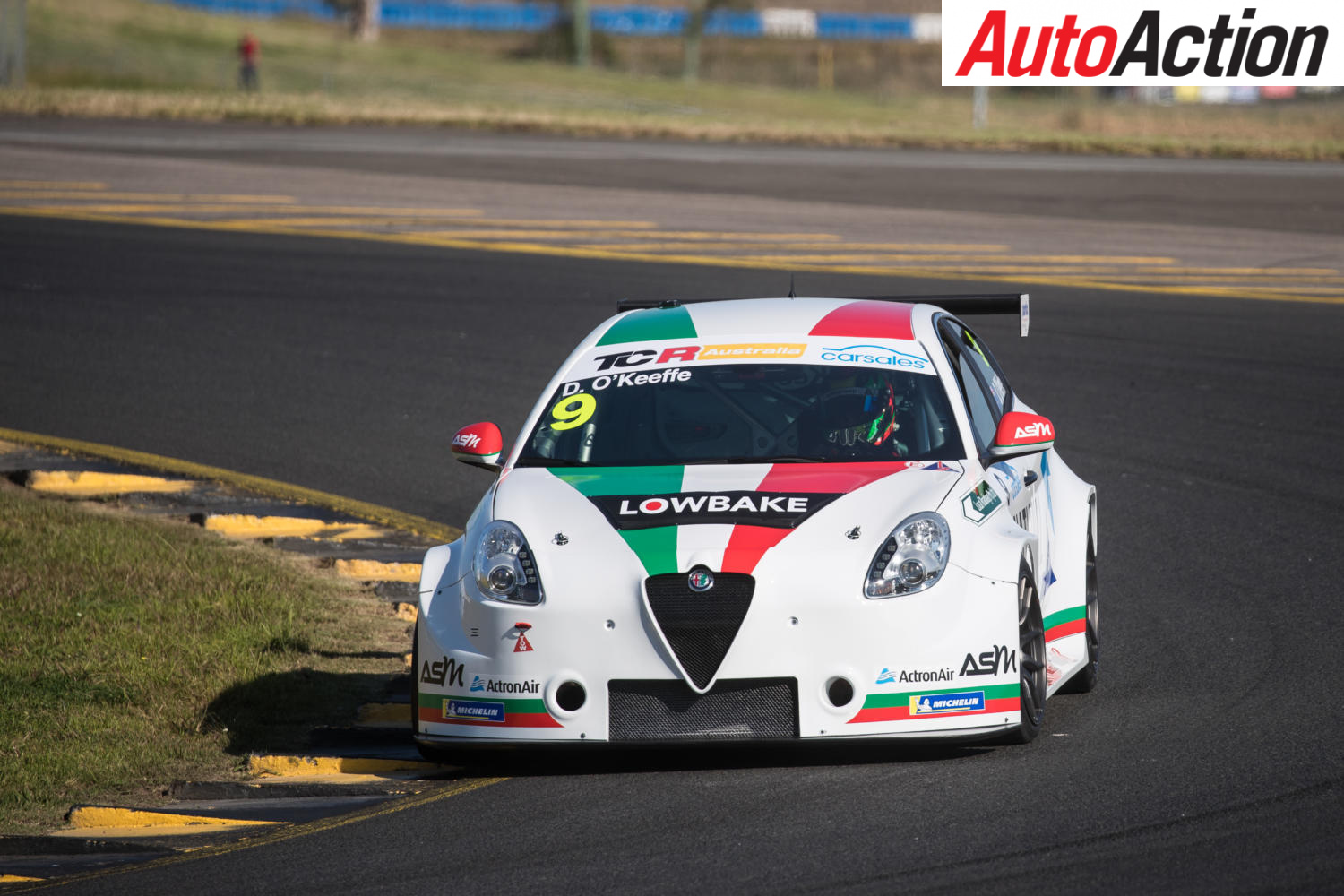
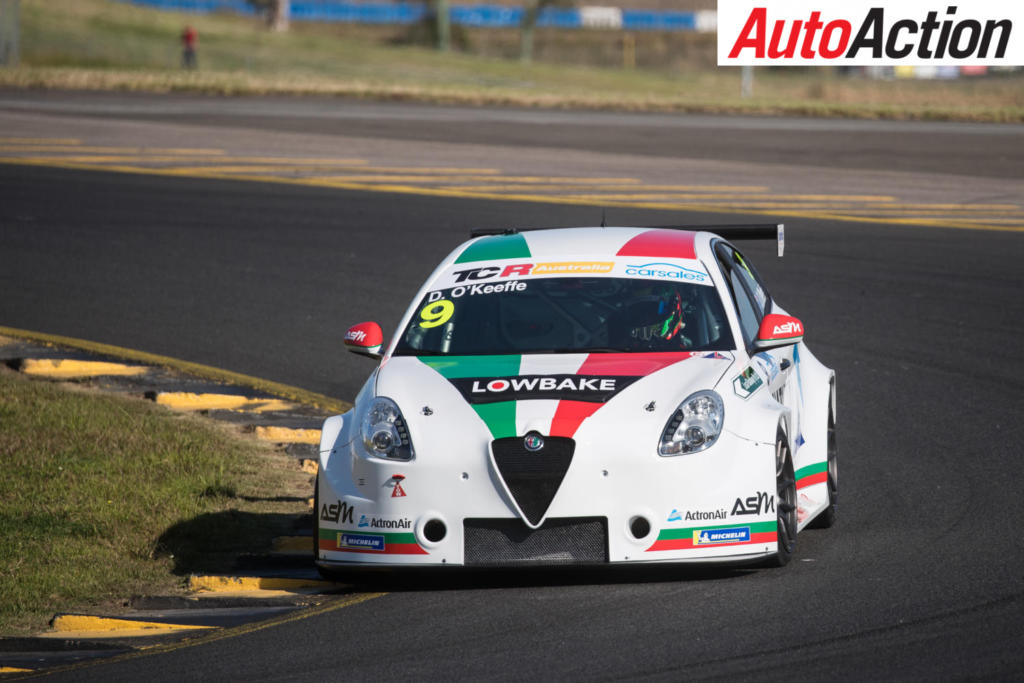
Under the Skin: Alfa Romeo Giulietta Quadrifoglio TCR
By now most Australian race fans know what TCR is all about, having witnessed the opening season of TCR Australia.
By HEATH McALPINE
Interest has been high with a number of new cars arriving in the country since the series debuted.
Although there is a plethora of brands, so far there has been two consistent frontrunners, the Hyundai i30N TCR (which is featured here) and the Alfa Romeo Giulietta Quadrifoglio TCR.
Compared to the factory-developed, German-built Hyundai, the Alfa Romeo comes from a rather more modest background.
The model was one of the first cars to be homologated for the new set of regulations known as TCR which were devised by former World Touring Car Championship promoter Marciello Lotti in 2014.
The car was homologated and developed by Italian team Romeo Ferraris, an exponent of the Superstars Series in which it was a semi-factory Mercedes team.
With former works Alfa Romeo driver Salvatore Tavano at the wheel, the original Giulietta is a very different beast compared to what has turned out to be a frontrunner this season.
“It has been hard work, because we had in mind the target of running the Giulietta before the end of the season,” admitted CEO Mario Ferraris back in 2015.
“Finally, the first car was completed and the engine tested on the bench with promising results. We are now ready to begin the technical development on the track.”
Various chassis developments, changes to the aerodynamic package and a switch of engine from the original 1.7-litre unit to a 2.0-litre motor taken from the Giulia, are the main catalysts behind the Giulietta’s success.
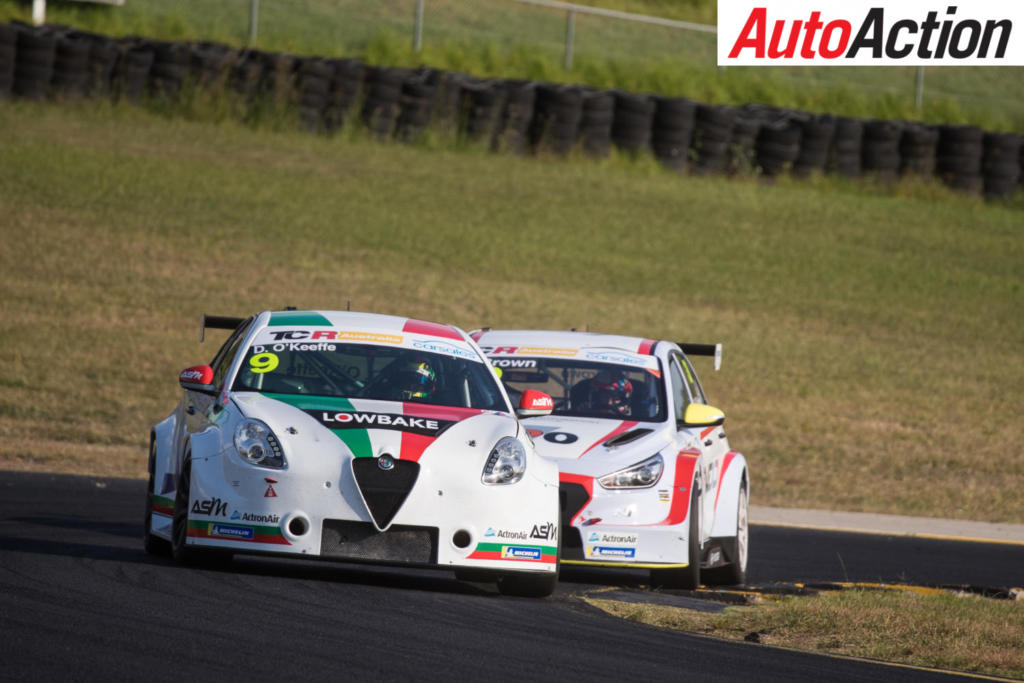
It has not gone unnoticed. Alfa Romeos now feature on the grid of most major TCR series around the world, starting at the top with the World Touring Car Cup (WTCR) through to each major series in Europe and even in America.
Garry Rogers Motorsport team owner Garry Rogers is renowned for backing an underdog, but also has an association with the Italian marque, having fielded an Alfa Romeo 155 for Steve Richards during the 1995 Australian Super Touring Championship.
This later became a dual ASTC and Australian Touring Car Championship campaign, but with the Alfa was parked in favour of a Honda Accord.
Fast forward 24 years and GRM is back in two categories again but to a much larger scale, running two Supercars alongside four TCR machines.
Running GRM’s TCR program is the experienced Bruin Beasley, who was attracted to the new class after accidentally stumbling on it last year while on a trip to Europe.
“For me, like a lot of people, I was very pessimistic,” Beasley told Auto Action.
“The eye-opener for me was last year, I was in Germany at a round and I started wandering around and thinking ‘what is all this?’ Every manufacturer had a marquee and a corporate area, each manufacturer had girls handing out brochures
“I started looking around and I watched a race, I thought ‘This is something that no one really understood what was going on,’ then I went to Italy, I walked into Monza (and) the same thing was going on. There were 25-30 cars on the grid and every manufacturer was there, had cars on display, every manufacturer had girls handing out brochures and I thought, ‘This has got some momentum.’”
Another attraction to Beasley was that TCR is a global formula with a clear set of rules and regulations, that are the staple of all TCR series around the world.
This means that the cars competing in the Australian series can race in the same configuration in Germany or Asia or America or even WTCR, without modifications.
Balance of Performance is the key to the competitiveness of each car. The BoP formula has been successfully used in GT3 since its beginning and uses evaluation tests to level the cars out through a variety of measures. For TCR, organisers use a program to calculate what BoP measures need to be taken, focusing on engine mapping and weight.
“Effectively, there is a program in place where lap times and weights are put into software that then gives you a formula,” Beasley explained. “It comes back and says ‘That particular car gets 10kg more or 10kg less going into the next round based on the round before.’
“There is BoP in engine mapping – there’s three levels: 95 per cent, 98 per cent, 100 per cent maps for example – and weight. You can take weight out or put weight in. The fastest two cars for each manufacturer are placed into the program and it will tell you in the end what the BoP is.”
In a motor sport world where there is plenty of control components, TCR goes against the grain with many road car components being carried over to the race car. In fact, when Auto Action visited the GRM workshop, the team was repairing Dylan O’Keeffe’s severely damaged car and in the process had acquired a wrecked road car shell to replace the necessary panels for the next round.
For this reason, Beasley likens the formula to the old Group C regulations due to the lightly level of modifications compared to the road car.
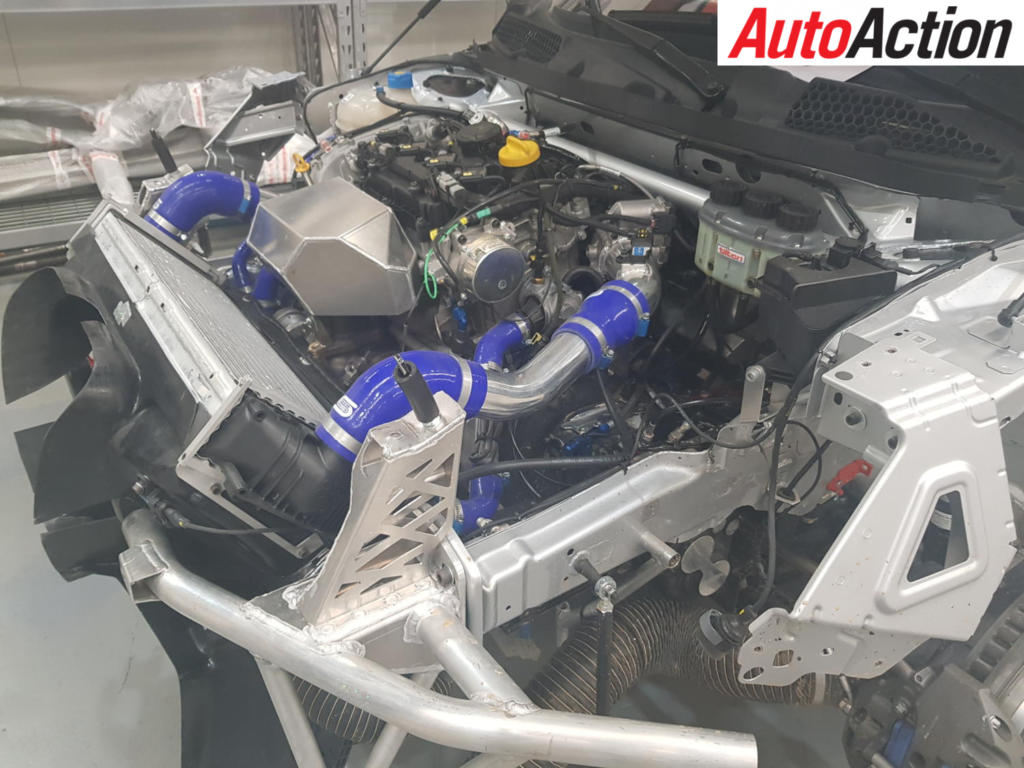
The aforementioned 2.0-litre engine used in the Giulietta Quadrifoglio TCR is taken straight from its sibling, the Giulia. It is a 4-cylinder engine that was launched by the Fiat Chrysler Automobiles as its Global Medium Engine in 2016 and appears, despite some minor tweaks for performance and reliability measures, almost standard.
Some of the components are taken from other manufacturers and are generally shared by each constructor of homologated TCR cars, making it easier for organisers to gauge the performance of each model.
“There are little bits and pieces on the engine that are from variable things like the intercooler is off a Volkswagen van, the turbo is off a Mercedes. The engines are standard but not standard, (but) it’s basically standard engines with standard components,” Beasley continued.
“Most of the other models are running the same turbo and go through the process before the homologated teams submit it for BoP. It’s the same with all the mapping, TCR organisers have access to the mapping and can change it accordingly. The engines are basically standard with little parts added to make it reliable and generate the power that is needed.
“The engines come sealed from the manufacturer, we can’t even touch anything, which in theory is fantastic but we’re a long way from Europe. So when something does go wrong, we need to cover that base. We have a spare engine we haven’t pulled out of the box yet. We haven’t needed to.”
Another sealed item is the gearbox, which is a Sadev 6-speed sequential unit with paddleshift controls. It features an AP Racing sintered multi-disc clutch and sends power through a mechanical limited slip diff with adjustable preload, driving through the front wheels. The only thing GRM is required to do is complete general cleaning and servicing.

There is a lot of Alfa Romeo road car in the suspension with Romeo Ferraris modifying what is already at hand to fit the improved goodies.
“The rear uprights are a genuine Alfa Romeo part, but there is a bit of machining here and there to fit the drop link on, but fundamentally it,s original,” Beasley said.
“Romeo Ferraris make its own anti-roll bar, but there are three options we’re allowed to run, so all that stuff is off the shelf. All the arms and stuff it manufactures, none of it is outrageously priced, it’s easy to say ‘Romeo Ferraris are price fixing’ but it’s not expensive.”
Eibach springs and Bilstein two-way adjustable dampers are homologated with the car and provide limited set-up options, which can’t be strayed from. The rest of the components, including sway bars, are built in-house at Romeo Ferraris and are purchased online.
The Alfa Romeo runs 6-piston Brembo calipers on the front and 4-piston at the rear, while the rotors are Romeo Ferraris branded.
According to Beasley, “It’s a big brake, almost like a Supercars brake, it’s massive.” There are 378mm ventilated steel discs at the front and 290mm steel discs at the rear.
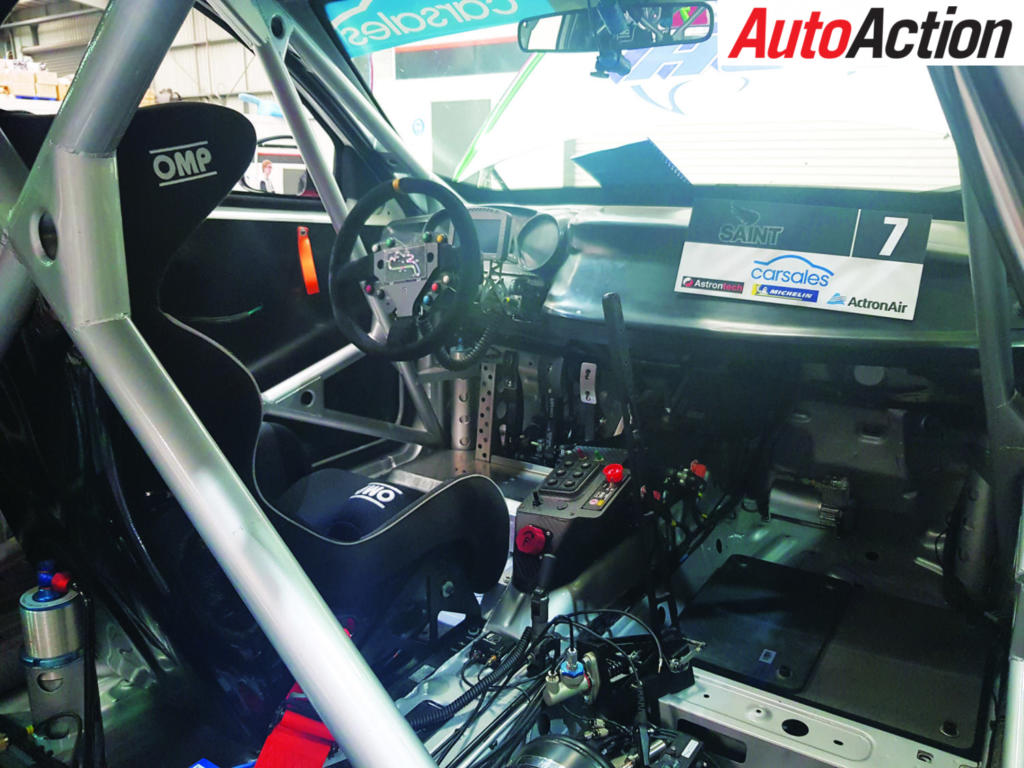
Inside the Giulietta Quadrifoglio TCR is cosy, with OMP 6-point safety harness keeping the driver safe in an OMP racing seat with the same brand fire extinguisher system, a CESAL 2 set-up and a Tilton off the shelf pedal box.
GRM ordered its fleet of Alfa Romeos with MoTec gauges as the team have the equipment already at hand and have experience with the systems. AIM electronics are used throughout as the system preferred by Romeo Ferraris alongside VBoxs to accumulate data, however telemetry is prohibited.
As the TCR vehicles are smaller compared to a Supercar, the positioning of the driver within the car is completely different and more like where a driver would sit in a road car, although of course on the left-hand side.
“The only real difference in these cars compared to a Supercars is the driver isn’t as far back or across to the centre as they are in a Supercar; it’s a touring car and that’s where the driver sits,” Beasley stated.
“Dylan [O’Keeffe] had a big impact at Phillip Island, he got T-Boned both sides, (but) there was no injuries, the seat brackets didn’t break. There might be some people say TCR cars aren’t as safe, (but) they race these cars around the world and no one has been killed. The FIA standards are pretty good and these cars meet that, it’s part of the criteria.”
Situated behind the driver, where the rear passengers usually sit, is the 100-litre fuel system and tank, which must meet all of the FIA’s stringent conditions.
Surrounding the driver is an FIA approved roll cage built using chrome moly, making these cars extremely safe as proven last year during the opening race of the WTCR event at Vila Real, when nearly the entire field piled into one other. There were minimal injuries amidst the damaged machinery.
As mentioned earlier, the bodywork is mainly original, as is the glass, with the only real modifications being to the front of the Alfa Romeo. The bonnet has been modified to fit the intercooler, flares are fitted to allow the Michelin S9H control tyres on Romeo Ferraris branded 18×10” rims. Fibreglass front guards, bonnet, front bumper and carbon fibre GT-style splitter make up the front end of the car, together with standard headlights.
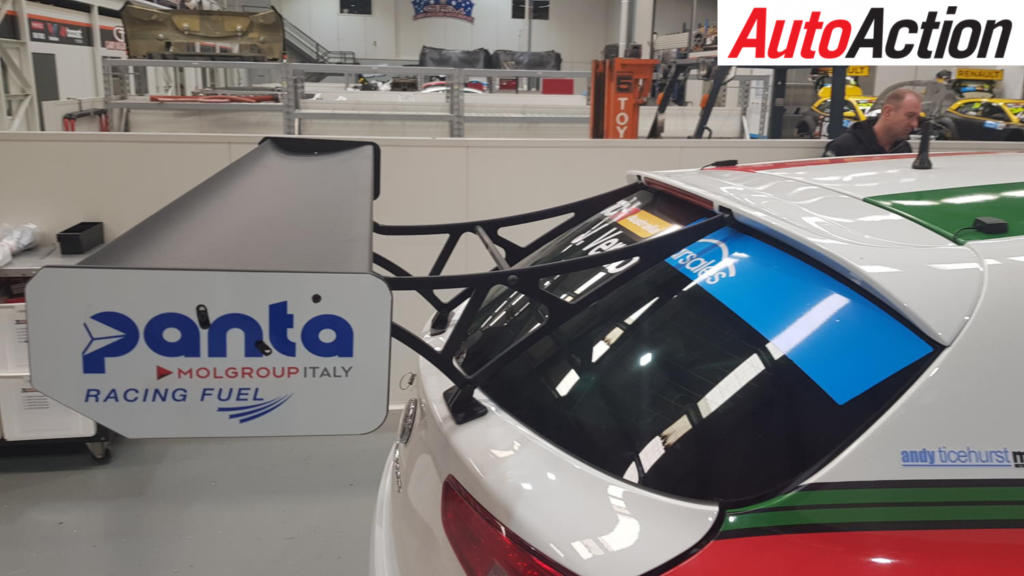
At the rear, the bumper has been re-designed by Romeo Ferraris to improve the aerodynamics, while the carbon fibre rear wing has gone through an evolution where the uprights have been shortened to sit closer to the body, while fibreglass side skirts finish off the aerodynamic details of the Alfa Romeo.
Despite Romeo Ferraris being a private team, the support GRM has received so far has been excellent.
“You can either say good planning or luck, both are beautifully built cars, Romeo Ferraris has done a really good job, worked pretty hard, (it’s) professional with its online program and its assistance to us has been good,” praised Beasley.
“We’ve hit the ground running with those cars, which for us is fantastic, but I’m sure as we keep going along, TCR organisers will throw some weight at us and that’s part of the program.”
The Alfa Romeos come with a manual that specifies the homologated parts for the Giulietta Quadrifoglio, which are purchased directly from Romeo Ferraris. This means that development costs are non-existent and teams are guaranteed to receive the same part, making the Giulietta Quadrifoglio that races in America the same as the one in Australia.
A part can be re-homologated, but only if it is a cost saving or safety measure, meaning endless upgrades just don’t happen in TCR, which appears to learned from GT3 where upgrades have killed the category for privateer teams.

Beasley has jumped from Supercars to TCR so can form a qualified opinion on working between the two cars.
“It’s definitely a lot simpler, it hasn’t got the electronics and bits and pieces the Supercars have got, but is that a good thing? I don’t think it’s a bad thing,” Beasley told Auto Action.
“Supercars are extremely complicated for what they are, they’re extremely expensive and high maintenance for what they are. These cars are a lot simpler and don’t have a lot of the things Supercars fans really like, but they don’t cost $2.5 million to run either.”
Beasley is excited by the possibilities of TCR as it is affordable compared to other similar categories (at worst, an annual budget is $300,000-$350,000) and provides the possibility to race at some of the best circuits in the world.
With further brands expected to compete in TCR worldwide, Alfa Romeo and Romeo Ferraris’ emergence has come at just the right time.
TECH SPECS: ALFA ROMEO GIULITTA QUADRIFOGLIO VERDE TCR
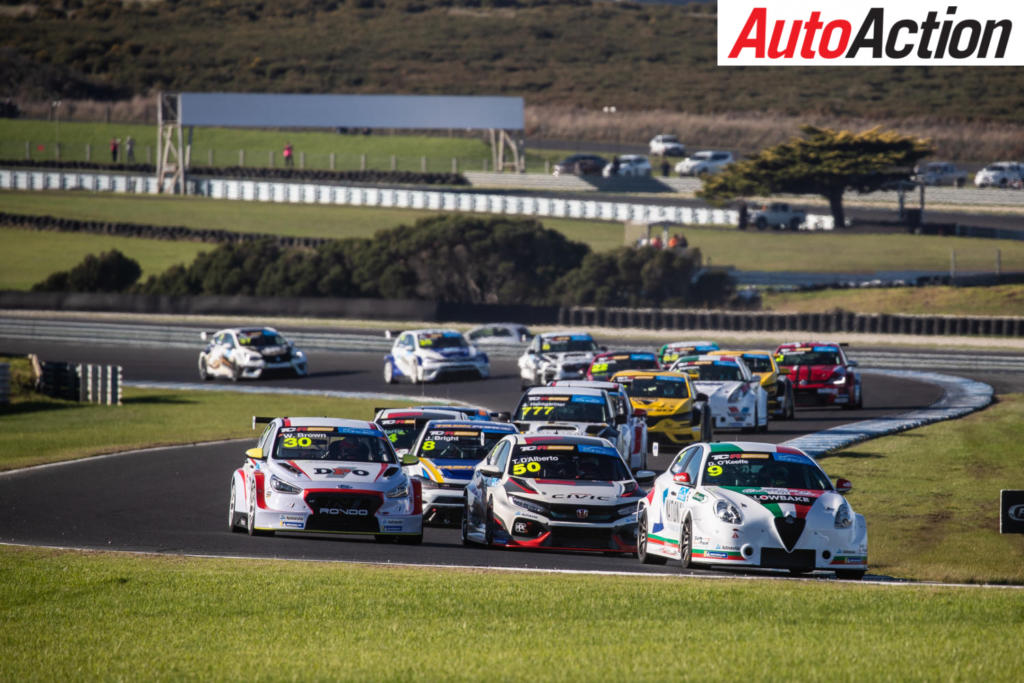
ENGINE:
Turbocharged 4-cylinder in line, transversally installed
Distribution: two overhead camshafts, 16 valves
Displacement: 1742 cc
Bore x stroke: 83 x 80.5 mm
Max. output 340hp @ 6800 rpm
Max. torque: 440nm @ 3500 rpm
Lubrication: wet sump
TRANSMISSION
Front-wheel-drive
Gearbox: Sadev 6-speed sequential with paddle shift
Clutch: multi-disc
Differential: mechanical limited slip differential
CHASSIS
Front suspension: McPherson strut, coil springs, gas-filled dampers, anti-roll bar
Rear suspension: multi-link axle, coil springs, gas-filled dampers, anti-roll bar
Steering: electrical power assisted rack and pinion
BRAKES
Dual circuit hydraulic system
Front brakes: 6-piston calipers, 378 mm steel ventilated discs
Rear brakes: 2-piston calipers, 290 mm steel discs
DIMENSIONS
Length: 4641 mm
Width: 1950 mm
Wheelbase: 2625 mm
Minimum weight: 1265 kg including the driver
BOP
Engine performance level: 102.5%
Ballast: -40kg
Ride height: 70mm
PRICE
$192,000AUD approx.
Article originally published in Issue 1764 of Auto Action.
For Auto Action’s latest feature, pick up the latest issue of the magazine, on sale now. Also make sure you follow us on social media Facebook, Twitter, Instagram or our weekly email newsletter for all the latest updates between issues.


